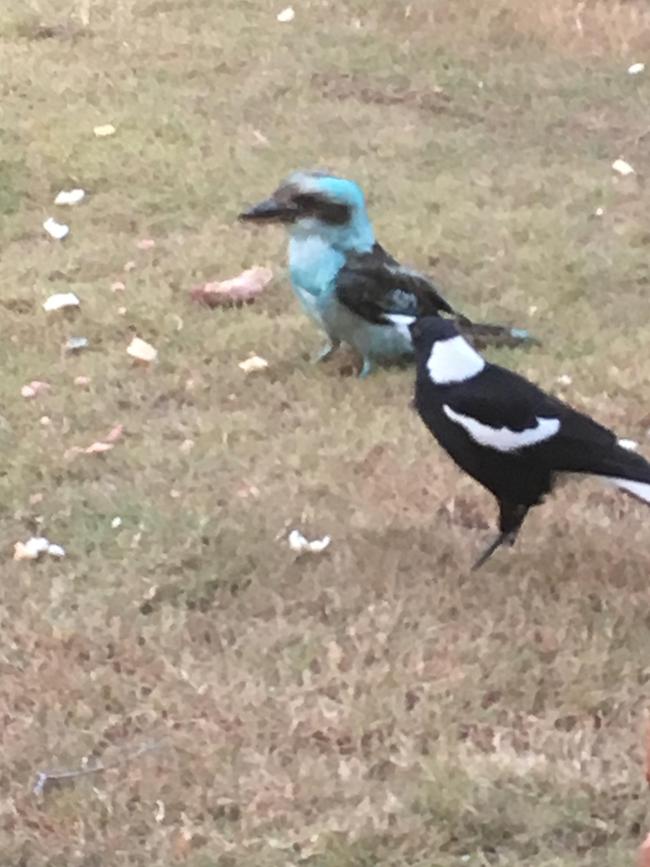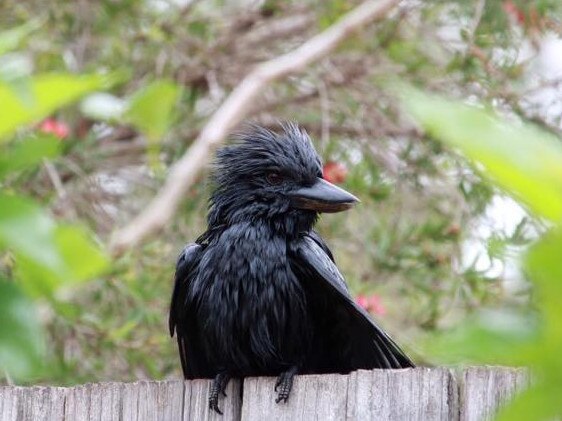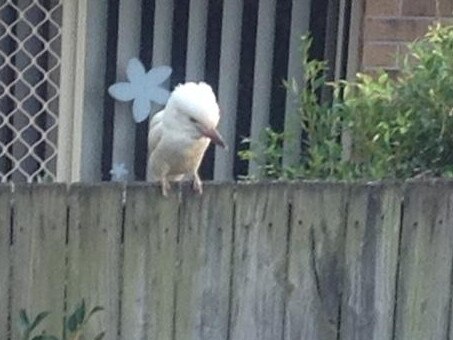First there were rare white, then black kookaburra sightings, but what about blue kookas?
It is a mystery that has baffled both experts and Sunshine Coast neighbours for years. Just when this resident thought kookaburras couldn’t get any weirder following the spotting of a black one, a “blue” one shows up.
QLD News
Don't miss out on the headlines from QLD News. Followed categories will be added to My News.
IT IS a mystery that has baffled both experts and Sunshine Coast neighbours for years.
When Tewantin resident Gregory Smith recently spotted a photo of a rare black kookaburra sighting in Brisbane, it reminded him of a family of “rare blue” kookaburras he had also stumbled across.
Mr Smith, 67, and his daughter, Melissa, 39, were among some locals near the Noosa Parklands who received regular visits from up to a dozen kookaburras coloured blue for about six months during 2017.
The bushfire photo Facebook did not want you to see
Moving image of Steve Irwin shuts down Instagram
“Someone suggested they might have gotten into the blueberries or something but it’s was too much all over them and we haven’t got blueberries near us,” he said.
Mr Smith said the kookaburras, who were blue where their white feathers usually were have not been seen since, resulting in ongoing puzzlement.
Sue Marian, 56, said she and her family also spotted the blue kookaburras during the same time period in the same area.
“I thought it was a bit bizarre, you don’t see blue kookaburras,” she said.
Various scenarios initially went through Mr Smith’s head, including whether someone painted the birds, whether they could be a cross between a kingfisher or if the colour was a genetic defect.


The retiree posted the photos of the blue kookaburras to Facebook late last year after seeing a photo of a rare black Kookaburra photographed in Forest Lake and posted to Facebook bird groups by Alena Possum, leaving even more bird lovers perplexed.
Another black kookaburra was spotted in Rockhampton by Clinton Lennox about a month later.
Black or dark brown feathers in birds are due to melanin, and excess production of dark pigmentation is called melanism, according to the Queensland Museum.
Bird experts believe the white kookaburra to have a condition called leucism, a condition that affects only the bird’s feathers, as opposed to being albino.
Though the experts were able to identify and explain those unusual kookaburras, they, too, have been left perplexed over the blue birds but suspect someone had dyed them.
Chris Burwell, 51, senior curator of entomology at the Queensland museum and keen bird watcher, said the blue kookaburras in the photos were typical laughing kookaburras.
“It looks like some type of staining,” he said.
“Birds do bath. They come down and bathe themselves in water, so maybe some water nearby was stained.”

Gregory Czechura, former Queensland Museum Senior Information Officer, said blue mutations on what would normally be buff-white plumage seemed unlikely.
“Kookaburra colour mutations (in addition to albinism) tend to run to dark, black or yellow,” he said.
Mr Czechura, 67, said reasons the birds were blue could have varied from someone conducting research into the animals, accidental contact with a dye, to a wildlife carer marking rehabilitated birds.
It could have also been someone marking their ‘tame’ kookaburras or be “someone’s idea of a joke,” he said.
Professor Darryl Jones, urban ecologist at Griffith University, said there were cases where researchers would mark birds with food colouring.
“About five years ago, we studied white ibis to see where they go,” he said.

Prof Jones, 62, said the first study involved identifying if the ibis that frequented South Bank were the same ones that regularly appeared in other areas of the city.
“We actually literally filled up high pressure water pistols with cake colouring,” he said.
“It stained them quite well for about six weeks and was a completely safe thing to do.
“We had red ones, green ones and blue ones for a while.”
The second study saw some Ibis at a landfill marked green via a water mist spray to determine if they were the same ones frequenting the airport.
Melissa Smith, 39, said she would love to find the answer to the blue kookaburra mystery.
“I initially wondered if they got in the way of some way of some blue spray paint,” she said.
Then I thought, ‘How could someone get a hold of a dozen kookaburras, unless they were standing in a line, and get all under their tummy.’”
If you can reveal the mystery of the “blue” kookaburras please let us know at digital@couriermail.com.au


